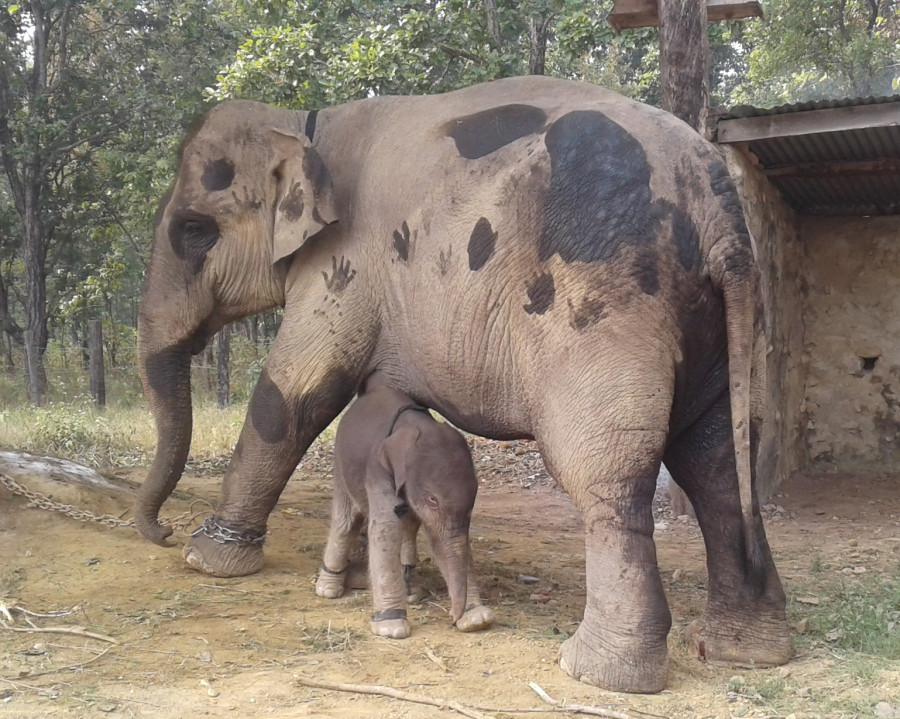Madhesh Province
Destruction of biodiversity corridor for Nijgadh airport could be disastrous for wild elephants
The migratory pathway of the wild elephants is part of the forests that is set to be striped for the proposed Nijgadh International Airport.
Shankar Acharya
The proposed Nijgadh International Airport site is adjacent to Parsa National Park and is home to endangered wildlife and an important biodiversity corridor at the foothills of the Chure range. Conservationists fear that the construction of the airport will destroy the natural biodiversity corridor used by the wildlife of the national park, especially those used by wild elephants.
Read: Eight companies from seven countries are vying for the bid to build Nijgadh International Airport
Conservationists suggest leaving some parts of the forest in Bara district untouched to conserve the traditional migratory corridor used by wild elephants. “The authorities must consider the wildlife that lives in these parts. They must consider the damage that will be done to the endangered wild elephants that use the corridor,” said Ashok Ram, an assistant conservation officer of the park.
“Two kilometres of forest land in the western part of Bakeya stream and three kilometres of forest land in the southern part of the East-West Highway should be left untouched to conserve the migratory pathway of elephants,” he said.
Read: Tourism minister vows to build Nijgadh airport at any cost
Sprawling over an area of 8045.79 hectares, the proposed airport would require felling of 2.4 million trees. As per the project’s Environment and Social Impact Assessment report, nearly 770,000 trees will be chopped down during the first phase. Nearly 90 percent of the project’s area is covered by Shorea robusta trees also known as saal or sakhua.
Conservationists worry about the lack of proper homework by the authorities before initiating clearance of the forest area for the construction of the airport. Amir Maharjan, chief conservation officer at the park, said that authorities plan to start the construction work of the airport soon while the fate of the wildlife of the forest remains undecided. “Initiating construction work disturbing the biodiversity corridor will have a direct effect on the native elephants in the park. The elephants take the same migratory route every year and destroying it will definitely have an impact on the annual migratory pattern of the wild elephants.”
Since elephants are among the most intelligent and sensitive animals, who follow established patterns of behaviour, any disturbance in their traditional corridor will have a long-lasting effect on the population of the wild elephants at the park, conservationists say.
“Concerned stakeholders should have carried out intensive study and research before giving a green signal to the project, but if their plans are already in order they must at least make efforts to conserve the migratory pathway of elephants before the start of construction work of the airport,” said Maharhan.
Ram, who has been doing his doctoral research on elephants’ movement, insists that some of the forest lands in the northern border of the proposed airport should be left untouched to conserve the traditional pathway of elephants.
Every year, elephants from Parsa breed with elephants from Sunsari and Sindhuli, by using this corridor to meet. Interbreeding not only maintains elephant population but also ensures that their gene pools stay diverse and healthy. According to Ram, disrupted migration will not only affect the flow of elephants but also the exchange of genes. He said, “If the elephants do not use their usual route, it could significantly reduce their population.”
In total, there are 225 wild elephants in various national forests, national parks and wildlife reserves across the country. It has been estimated that there are 100 to 110 elephants in Bardiya, 45 to 50 in Chitwan/Parsa, eight in Sindhuli, 13 to 14 in Koshi, 19 to 20 in Jhapa and 20 to 25 in Suklaphanta.




 7.12°C Kathmandu
7.12°C Kathmandu










%20(1).jpg&w=300&height=200)

